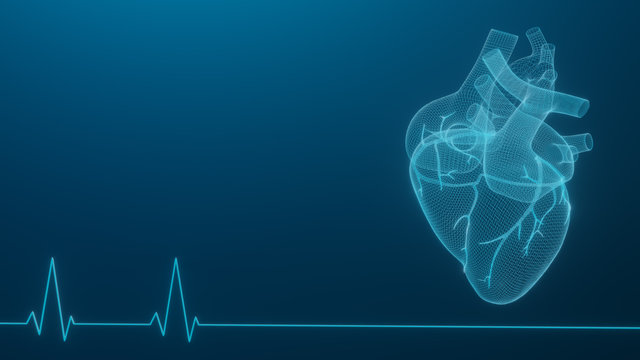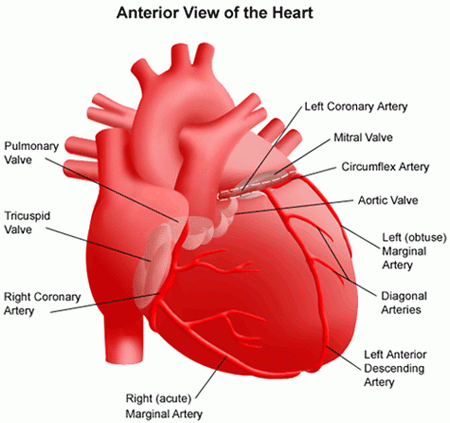Quick wins for cardiovascular wellness according to Dr Garcia
Comprehending the Value of Cardiology in Modern Medical Care Providers
Cardiology plays an essential role in modern healthcare, particularly as cardiovascular disease remains to be the leading reason for mortality worldwide. Advances in diagnostics and treatment have actually changed person treatment, making it possible for earlier treatments and enhanced results. Additionally, the shift towards preventive cardiology equips people to manage their wellness proactively. As technology remains to advance, the assimilation of ingenious services may further redefine cardiology's influence on public wellness, motivating a closer examination of arising patterns and their implications.
The Prevalence of Cardiovascular Disease and Its Influence On Public Health And Wellness
Heart disease continues to be the leading cause of fatality internationally, its impact expands far past individual people to impact public wellness systems and economic climates. The high prevalence of heart problem places a significant strain on medical care resources, demanding increased financing for recovery, prevention, and treatment programs. Public wellness initiatives need to resolve risk aspects such as obesity, cigarette smoking, and less active lifestyles, which contribute substantially to the rising incidence of heart conditions.Moreover, the financial worry associated with cardiovascular disease is tremendous, encompassing not only direct clinical prices yet also indirect costs connected to shed performance and premature mortality. Neighborhoods deal with obstacles in taking care of these costs, typically causing differences in medical care access and outcomes. As the population ages and lifestyle-related risks continue to intensify, the seriousness for efficient cardiology treatments ends up being extremely important. Addressing heart disease is not just an issue of specific health and wellness however also an essential public wellness top priority.
Breakthroughs in Heart Diagnostics and Imaging Techniques
Current developments in cardiac diagnostics and imaging techniques have actually changed the area of cardiology, improving the ability to monitor and detect heart problem. Methods such as cardiac MRI, CT angiography, and echocardiography have come to be progressively advanced, providing thorough photos of cardiac frameworks and features. These modalities permit for the very early identification of problems like coronary artery illness, heart failure, and valvular disorders.Moreover, innovations in non-invasive diagnostics, such as wearable innovation and remote monitoring tools, have empowered individuals and health care service providers. These devices help with real-time monitoring of heart rhythms and other essential indicators, resulting in prompt interventions. In addition, synthetic knowledge is being integrated right into imaging analysis, enhancing accuracy and effectiveness in medical diagnosis.
Advancements in Therapy Choices for Heart Issues
Recent improvements in cardiology have actually resulted in substantial developments in therapy alternatives for heart disease. These consist of advanced surgical methods that boost procedural results and arising medications that use brand-new avenues for therapy. As the area evolves, these developments play an essential role in improving individual treatment and outcomes.
Advanced Surgical Techniques
Developments in medical strategies have actually transformed the landscape of cardiology, providing brand-new wish for people with heart disease. Minimally invasive procedures, such as catheter-based treatments, have actually substantially reduced recovery times and healthcare facility keeps. Techniques like robotic-assisted surgical treatment boost precision, permitting doctors to navigate complicated anatomical structures with higher precision. Advancements in imaging technology facilitate real-time visualization during treatments, improving outcomes. Transcatheter aortic shutoff substitute (TAVR) exhibits an innovation in dealing with aortic constriction, allowing valve replacement without open-heart surgery. Additionally, hybrid strategies that incorporate catheter-based and medical methods offer customized remedies for different cardiac issues. These advanced medical methods not only enhance person safety and security however also expand therapy choices, underscoring the critical duty of advancement in contemporary cardiology practices.
Arising Treatments and medicines
As the landscape of cardiology remains to progress, emerging therapies and drugs play a critical role in boosting treatment alternatives for heart disease. Innovations such as unique anticoagulants and advanced lipid-lowering representatives have changed the administration of heart diseases, greatly minimizing client morbidity and death. Additionally, the growth of gene treatments and regenerative medicine uses promising opportunities for dealing with conditions formerly deemed permanent. Clinical tests are continually exposing the efficiency of these therapies, pressing the borders of conventional therapies. Moreover, the combination of electronic health innovations promotes customized medication, permitting for tailored treatment strategies based upon hereditary and lifestyle aspects. Jointly, these advancements underscore the dynamic nature of cardiology, enhancing person end results and redefining standards of care in modern health care.
The Function of Preventive Cardiology in Individual Treatment
Preventative cardiology plays an essential role in patient care by focusing on the identification of danger factors that add to cardiovascular disease. Through lifestyle modification techniques and early detection techniques, healthcare service providers can efficiently decrease the incidence of cardiovascular occasions - Dr Garcia. This aggressive strategy not just enhances individual results but also advertises lasting health and wellness
Danger Factor Recognition
While cardio illness stay a leading cause of morbidity and death worldwide, efficient danger factor recognition acts as a foundation of preventive cardiology. Recognizing danger elements such as hypertension, diabetes, family members, and hyperlipidemia background is necessary for very early treatment. Healthcare specialists use numerous screening methods to examine these elements, permitting for tailored safety nets. Additionally, comprehending a patient's way of life choices, such as cigarette smoking and physical inactivity, additionally educates danger analyses. This extensive analysis allows medical professionals to develop individualized treatment plans focused on mitigating threats. By prioritizing danger variable identification, health care systems can boost patient results and lower the overall worry of cardiovascular illness, inevitably adding to enhanced public health and wellness methods and resource allocation.
Way Of Life Modification Techniques
A multitude of research studies highlights the crucial function of way of life adjustment approaches in minimizing cardio condition risk. These approaches incorporate dietary modifications, boosted exercise, cigarette smoking cessation, and weight monitoring. By embracing a heart-healthy diet plan rich in fruits, vegetables, entire grains, and lean proteins, individuals can lower cholesterol levels and blood stress. Normal exercise enhances the heart and enhances overall cardiovascular health and wellness. In addition, stopping smoking cigarettes substantially decreases the danger of cardiovascular disease and enhances recovery prices for those with existing problems. Weight monitoring additionally adds to cardiovascular health and wellness by alleviating other danger factors such as diabetic issues and hypertension. Implementing these way of life alters not just advertises private well-being however additionally serves as a cornerstone of precautionary cardiology in individual treatment.
Very Early Detection Methods
Way of life alterations significantly add to decreasing cardio illness threats, but they are most effective when coupled with very early discovery strategies. Preventive cardiology highlights the significance of determining possible heart concerns prior to they rise into severe problems. Strategies such as blood stress monitoring, cholesterol testing, and advanced imaging modern technologies like echocardiograms play critical roles in assessing cardiovascular health and wellness. Biomarkers and genetic screening likewise enhance the accuracy of early detection, enabling tailored precautionary approaches. Normal cardiac risk analyses empower health care suppliers to interfere proactively, possibly preventing cardiac arrest and strokes (Cardiology care). By integrating these very early detection approaches right into routine care, people can benefit from timely way of living interventions and targeted treatments, eventually boosting and improving end results lifestyle
Integrating Modern Technology Into Cardiology Practices
As developments in innovation continue to improve different areas, the combination of ingenious tools and systems right into cardiology methods has become vital for improving patient care and results. Telemedicine systems permit cardiologists to check patients from another location, enhancing accessibility to care while minimizing the burden on health care centers. Wearable gadgets, such as smartwatches, enable constant heart rate monitoring, notifying both medical professionals and clients to prospective concerns in real-time. In addition, fabricated knowledge (AI) is being utilized to assess large quantities of heart information, assisting in very early diagnosis and tailored therapy plans. Advanced imaging techniques, consisting of 3D echocardiography, improve visualization of heart frameworks, bring about extra precise treatments. Digital health and wellness records (EHRs) simplify client information administration, making certain that cardiologists have instant accessibility to crucial information. Together, these technological innovations are changing cardiology, advertising proactive monitoring and improved health outcomes for clients with cardio conditions.
The Importance of Patient Education and Engagement
Person education and interaction play an essential function in the monitoring of cardiovascular wellness. By equipping patients with understanding about their problems, therapy options, and way of living changes, doctor empower individuals to take an active role in their treatment. This aggressive strategy can lead to boosted adherence to recommended medications, dietary changes, and workout routines, eventually reducing the threat of complications.Engagement additionally promotes a solid patient-provider connection, encouraging open interaction and trust. When people feel educated and entailed, they are extra likely to voice issues and ask inquiries, which can result in better medical end results. Furthermore, academic sources, such as workshops or digital platforms, can improve understanding and advertise self-management approaches. Generally, focusing on person education and involvement is vital for enhancing cardio health, enhancing lifestyle, and lowering healthcare costs related to heart diseases.
Future Fads in Cardiology and Their Potential Impact

Often Asked Concerns
What Way Of Living Modifications Can Decrease Heart Disease Risk?
The current question addresses way of life changes that can substantially reduce cardiovascular disease risk. Cardiology care. Embracing a well balanced diet, participating in routine physical task, keeping a healthy and balanced weight, taking care of tension, and preventing cigarette can notably enhance cardiovascular wellness
Just How Can I Recognize Early Indicators of Heart Issues?
Identifying very early signs of heart problems involves surveillance signs such as upper body discomfort, shortness of breath, fatigue, and irregular heartbeat. Prompt awareness of these signs can prompt needed clinical examination and treatment for far better results.
What Are the Differences In Between Cardiologists and Cardiac Surgeons?
The differences in between cardiologists and heart surgeons depend on their roles; cardiologists mostly detect and take care of heart problems via non-invasive approaches, while heart specialists do procedures to fix architectural heart issues. Each plays a vital, distinct function.

How Often Should I Obtain My Heart Health And Wellness Checked?
The frequency of heart checkup differs based upon individual threat aspects. Normally, adults should undertake examinations every one to 2 years, while those with status quo may require even more frequent analyses as encouraged by healthcare specialists.
What Function Does Genes Play in Cardiovascular Disease Threat?
Genetics considerably affects cardiovascular disease threat, with familial patterns suggesting acquired conditions. Details genes can incline people to hypertension, cholesterol issues, and other cardio problems, highlighting the relevance of genetic testing in assessing heart Related Site wellness. Heart illness continues to be the leading cause of fatality globally, its effect extends far past individual clients to influence public health systems and economic situations. Public health efforts must deal with threat factors such as weight problems, smoking cigarettes, and sedentary way of livings, which add significantly to the increasing occurrence of heart conditions.Moreover, the financial burden connected with heart condition is immense, encompassing not only straight clinical costs but likewise indirect costs connected to shed productivity and premature mortality. Precautionary cardiology plays a crucial role in client care by concentrating on the recognition of threat variables that contribute to heart disease. Synthetic intelligence (AI) and maker discovering are boosting diagnostics and person monitoring, enabling very early detection of heart conditions. The distinctions in Click Here between cardiologists and cardiac cosmetic surgeons lie in their duties; cardiologists mostly handle and detect heart conditions with non-invasive techniques, while heart doctors execute medical treatments to remedy structural heart concerns.